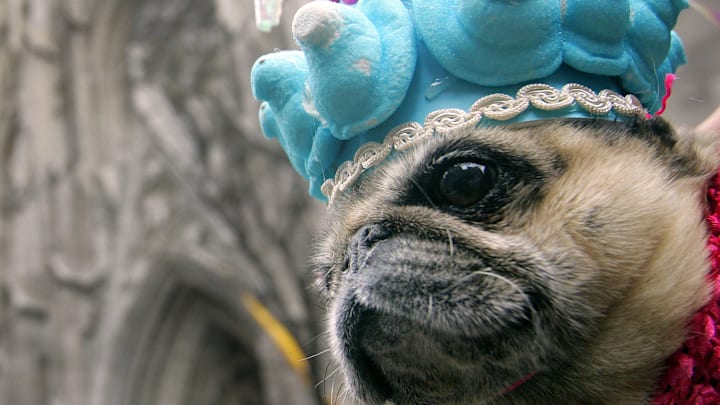Holidays can be a lot of fun. And some holidays, including Easter, are just as much about the celebrations as they are the decorations and gifts that go along with them. Of course, we can't forget that with certain holidays, there are also different foods and treats that play a big role in the overall experience.
Since Easter is nearly upon us, that means that once again we are in the thick of a holiday season that might see some new items entering our homes. And sometimes, those items are not exactly pet friendly. In fact, according to some pet experts with TrustedHousesitters, there are a few different items we often see during the Easter season that are not necessarily safe for our pets.
This is the time of year, when certain flowers make an appearance and even specific food items. And this is important because there are flowers, plants, foods, and more that are toxic to our pets. So what are the top five Easter/Spring items that you need to be mindful of?
Five Easter items that you should be wary of as they can be toxic to pets
Tulips
Did you know that Tulips are toxic to both dogs and cats? While it has been pointed out that the bulb of the plant is the most toxic to our pets, the entire flower is a problem as that toxin can be found in the leaves, stems, and basically the entirety of the flower. In fact, if ingested you could see your pet vomiting, drooling, having cardiac episodes, and losing their appetite.
Daffodils
Another flower that can be highly toxic to our pets is the Daffodil. According to the press email we received, "Your canine or feline friend will experience severe vomiting and health concerns if they ingest any part of a daffodil, but the bulb is particularly poisonous. Keep an eye on your dog if you are in an area where they may dig bulbs up, as it can make them very unwell."
Lilies
As someone who has never been a fan of Lilies because the smell of them has always given me headaches, I was actually not surprised to see this flower on a list of potential toxins for pets. However, I did not know that they were specifically toxic to cats. While this flower is on the list as a potential hazard to pets in general, we learned that "lilies, a popular spring flower, are the most common toxin to cats, making up 12.3% of all calls to the hotline. While lilies may be stunning to look at, these should be avoided by pet owners." Not only can your cat have seizures from ingesting any part of this flower, but it can also lead to kidney failure which is deadly.
Xylitol
If you are a pet parent, you likely already know about the dangers of things like chocolate and sugars to your animal's health. But in particular, xylitol, which is an artificial sweetener, is especially toxic to dogs. In the press email from Trusted Housesitters they explained that, "In dogs, xylitol can cause them to release large amounts of insulin, leading to a rapid drop in blood sugar. If their blood sugar drops too low, severe hypoglycemia can occur, which causes symptoms like vomiting, weakness, collapse, seizures, and even death."
Easter Ham
While the experts pointed to Easter Dinner as being potentially hazardous to our pet's overall health, we specifically wanted to look at the Easter Ham. The reason for this is because while ham may be delicious, it can also be problematic. Not only is it very fatty, which is not good for our dog's health and well-being, but depending on the way you add flavor to the meat, from cloves to brown sugar, there are so many additional things that can contribute to causing distress in your pet. In fact, one concern from feeding ham to your pet is pancreatitis, which can be exceedingly painful. Even the bone in a ham can be dangerous to a pet, so we recommend skipping out on giving your pet any table scraps.
At this point, it is important to pay very close attention to any holiday items entering your home or being given to your pet. There are hidden dangers to so many items we may not expect to be dangerous, and if you are pet parent, knowing what can be toxic or hazardous, especially during a holiday season, is important.
